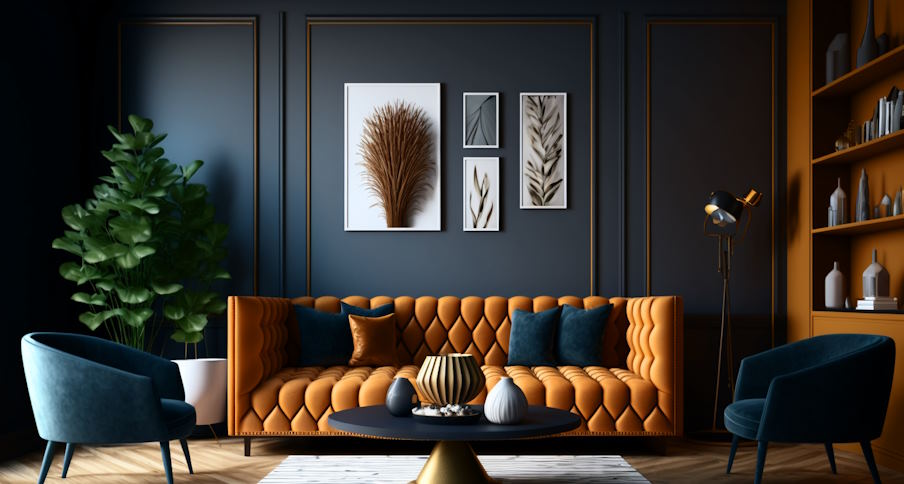As our lives continue to evolve and our needs change, so too must our homes adapt to accommodate these shifting demands. Enter the concept of multifunctional spaces, a design approach that allows homeowners to make the most of their living environments by maximizing versatility and flexibility. Gone are the days of rigid room definitions and static layouts. Instead, homeowners are increasingly seeking out innovative solutions that seamlessly transition their spaces to suit a variety of purposes.
Designing Multifunctional Spaces
Maximizing flexibility through modular furniture and fixtures:
One of the key strategies for creating multifunctional spaces is to maximize flexibility through the use of modular furniture and fixtures. These versatile pieces can be easily rearranged or adjusted to accommodate various activities and functions within a space. From modular sofas that can be reconfigured to create different seating arrangements to modular storage units that can be adapted to fit different items, these furniture solutions allow homeowners to quickly transform their spaces to suit their needs. With modular design, one can effortlessly transition from a cozy living room setup to an impromptu workspace or even a guest sleeping area. By harnessing the power of modular elements, homeowners gain the freedom to experiment with different layouts and adapt their spaces on the fly.

Incorporating convertible elements and transformable layouts:
Another effective approach to designing multifunctional spaces is the integration of convertible elements and transformable layouts. These design elements enable a single space to serve multiple purposes seamlessly. For instance, a dining table with drop leaves can expand to accommodate a large gathering or be folded down to create additional floor space for other activities. Similarly, wall beds or Murphy beds can be concealed during the day, transforming a bedroom into a spacious home office or recreation area. Transformable layouts, such as sliding partitions or room dividers, allow for privacy when needed or openness for larger gatherings. By incorporating these convertible elements and transformable layouts, homeowners can optimize their available space and create versatile environments that adapt to their changing needs.
Efficient use of space through clever storage solutions:
Efficient use of space is a crucial aspect of designing multifunctional areas. Clever storage solutions play a vital role in achieving this goal. Incorporating built-in shelves, cabinets, and storage compartments not only keeps the space organized but also maximizes the usable area. Utilizing vertical space with floor-to-ceiling shelving or utilizing under-stair storage can help minimize clutter and create room for various activities. Additionally, multipurpose furniture with hidden storage compartments, such as ottomans with lift-up tops or beds with built-in drawers, can be invaluable in optimizing space utilization. By integrating these innovative storage solutions, homeowners can ensure that their multifunctional spaces remain tidy, efficient, and conducive to the diverse range of activities they wish to engage in.
Practical Tips for Incorporating Multifunctional Spaces
Assessing personal needs and lifestyle factors:
When embarking on the journey of incorporating multifunctional spaces, it’s essential to assess your personal needs and lifestyle factors. Consider how you and your family members utilize different areas of your home and identify the activities that require dedicated spaces. Take into account your hobbies, work requirements, and social gatherings. By understanding your specific needs, you can better plan and allocate space for each function, ensuring that your multifunctional spaces align with your lifestyle.

Prioritizing flexibility and adaptability during renovation or construction:
If you’re planning a renovation or construction project to incorporate multifunctional spaces, make flexibility and adaptability your top priority. Opt for open-concept layouts that allow for easy reconfiguration and transition between different functions. Consider movable partitions or sliding doors that can create separate areas when needed. Ensure that electrical outlets and connectivity options are strategically placed to accommodate various activities. By designing with flexibility in mind, you’ll have the freedom to transform your spaces as your needs evolve over time.
Balancing aesthetics with functionality:
Multifunctional spaces don’t have to compromise on aesthetics. Strive for a harmonious balance between style and functionality. Choose furniture, fixtures, and decor that not only serve their intended purpose but also enhance the overall visual appeal of the space. Seek out design elements that seamlessly blend with the existing aesthetics of your home. Incorporate colors, textures, and patterns that reflect your personal style while ensuring that they do not hinder the adaptability and functionality of the space.
Making use of natural light and open spaces:
Natural light and open spaces can greatly enhance the ambience and versatility of multifunctional areas. Maximize the use of windows and skylights to bring in ample natural light, creating a bright and inviting atmosphere. Consider removing unnecessary walls or using transparent materials, such as glass, to create a sense of openness and connectivity between different areas. Embrace the concept of indoor-outdoor living by seamlessly integrating outdoor spaces with your multifunctional areas, expanding your usable square footage and blurring the boundaries between the inside and outside.


